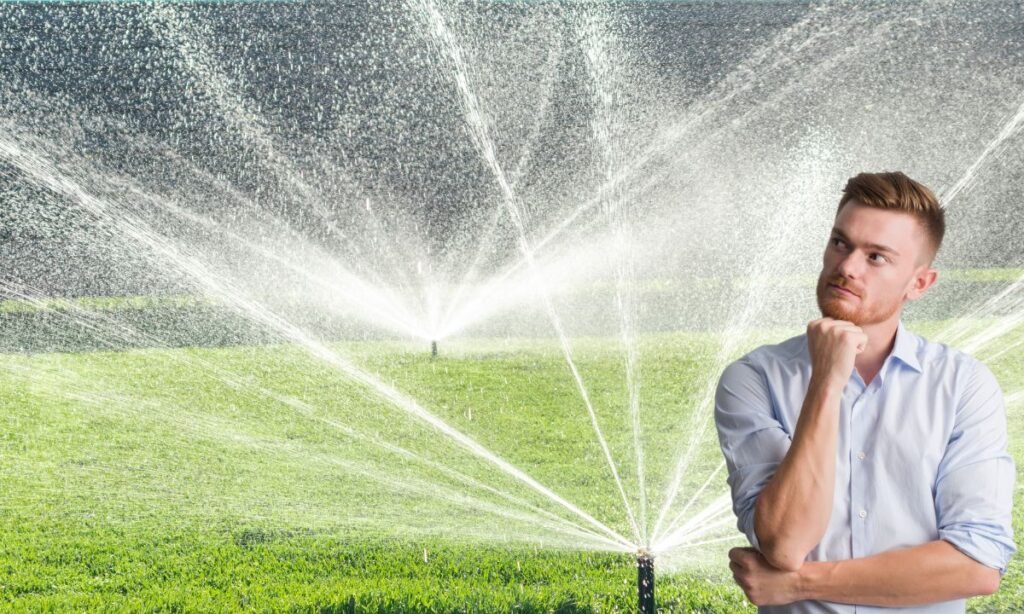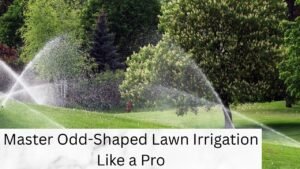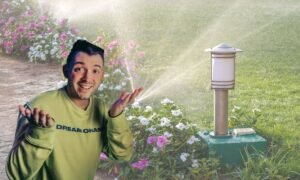When it comes to maintaining a lush, green lawn, your sprinkler system plays a crucial role. But like any other component in your garden, sprinkler heads don’t last forever.
Understanding the lifespan of a sprinkler head, what factors affect it, and how to extend it is key to keeping your lawn healthy and your irrigation system running smoothly.

Understanding the Lifespan of a Sprinkler Head
Sprinkler heads are designed to last between 5 to 10 years.
However, this lifespan can vary based on several factors, including the type of sprinkler head, the quality of installation, and the environmental conditions they face. Let’s dive deeper into what influences the life of a sprinkler head and how you can ensure yours lasts as long as possible.
Factors That Affect Sprinkler Head Lifespan
I break down the common types of sprinkler heads and their best uses. The youtube video below: Understanding Common Types of Sprinkler Heads | Ask This… by This Old House (YouTube, November 11, 2024) explains each type clearly, helping homeowners pick the right head for even watering and efficiency.
- Type of Sprinkler Head
- Different types of sprinkler heads have different lifespans.
- Rotary sprinklers are typically more durable and can last up to 10 years or more due to their robust mechanical design.
- Spray heads, which are more common in residential lawns, usually have a shorter lifespan of around 5 to 7 years because they are more prone to damage from debris and environmental factors.
- Material Quality
- The material used in sprinkler heads also plays a significant role in their longevity.
- Plastic sprinkler heads are common due to their cost-effectiveness, but they are more susceptible to damage from UV rays and freezing temperatures.
- Metal sprinkler heads, although more expensive, are more durable and can withstand harsh weather conditions better.
- Water Quality
- The quality of water in your area can greatly impact the lifespan of your sprinkler heads. Hard water, which contains high levels of minerals like calcium and magnesium, can lead to scaling inside the sprinkler heads. This scaling can clog the nozzles and reduce the efficiency of the sprinkler, ultimately shortening its lifespan.
- Climate Conditions
- The climate in your region affects how long your sprinkler heads will last. In areas with harsh winters, like Wichita, Kansas, freezing temperatures can cause water inside the sprinkler heads to expand, leading to cracks or even burst heads. Conversely, in hot, sunny climates, prolonged exposure to UV rays can cause plastic sprinkler heads to degrade and become brittle over time.
- Installation and Maintenance
- Proper installation is crucial for maximizing the lifespan of your sprinkler heads. Heads that are installed too deep or too shallow may experience issues with water pressure or physical damage. Additionally, regular maintenance, such as cleaning and adjusting the heads, can prevent problems that lead to early failure.
Signs Your Sprinkler Head Needs Replacement
Knowing when to replace a sprinkler head is just as important as understanding its lifespan.
Here are some signs that your sprinkler head might be nearing the end of its life:
- Inconsistent Watering
- If you notice uneven patches of grass, with some areas being too dry while others are overly wet, it could be a sign that a sprinkler head is malfunctioning. This might be due to a clogged nozzle, a misaligned head, or internal damage.
- Water Leaks
- Puddles around a sprinkler head when the system is off often indicate a leak. This could be due to cracks in the sprinkler head caused by freezing temperatures or physical damage from lawn equipment.
- Low Water Pressure
- A significant drop in water pressure can mean that the sprinkler head is clogged with debris or mineral buildup, or that the internal components are worn out and need replacement.
- Sprinkler Heads Not Popping Up
- Pop-up sprinkler heads that fail to rise when the system is activated are usually blocked by dirt or debris, or there might be a problem with the internal spring mechanism.
Extending the Life of Your Sprinkler Heads
While sprinkler heads have a finite lifespan, there are several steps you can take to extend their life and ensure your irrigation system functions efficiently:
- Regular Inspections
- Conducting regular inspections of your sprinkler system, especially before and after the growing season, can help you identify and address issues early. Look for signs of wear, leaks, or misalignment.
- Cleaning and Maintenance
- Keep the nozzles clean to prevent clogs from debris or mineral buildup. Using a descaling solution can help remove any deposits caused by hard water. Regularly adjusting the spray patterns ensures that your lawn is evenly watered and reduces strain on the system.
- Proper Winterization
- In colder climates, it’s crucial to winterize your sprinkler system before the first freeze. This involves draining the system or using compressed air to blow out any remaining water, which prevents freezing and cracking of the sprinkler heads.
- Upgrade to Durable Materials
- If you live in an area with harsh environmental conditions, consider upgrading to metal sprinkler heads. Although they are more expensive upfront, their durability can save you money in the long run by reducing the frequency of replacements.
How Long Should Sprinkler Heads Last?
The life expectancy of a sprinkler head depends on several factors, as outlined above. Here’s a quick reference table to help you understand the typical lifespan based on different conditions:
| Type of Sprinkler Head | Expected Lifespan |
|---|---|
| Rotary Sprinklers | 10+ years |
| Spray Heads | 5-7 years |
| Metal Sprinkler Heads | 10+ years |
| Plastic Sprinkler Heads | 5-10 years |
Cost of Replacing Sprinkler Heads
If it’s time to replace your sprinkler heads, understanding the costs involved can help you budget for this maintenance task. Here’s a breakdown of potential costs:
- DIY Replacement: $5 to $20 per head depending on the type and material.
- Professional Replacement: $50 to $150 per head, including labor.
If you’re replacing more than a few heads at once, double-check whether your pipe can handle the flow. Improper ratios can damage even brand-new heads.
Use our sprinkler-per-pipe calculator to ensure you’re not overloading your system.
Conclusion: Maximizing the Life of Your Sprinkler Head
Sprinkler heads are an essential part of keeping your lawn healthy, but like all things, they have a limited lifespan. Understanding the factors that affect their longevity, recognizing the signs of failure, and performing regular maintenance can help you get the most out of your sprinkler system.
Whether you’re dealing with harsh winters, hard water, or simply the wear and tear of time, taking proactive steps will ensure your sprinkler heads last as long as possible, saving you money and effort in the long run.





